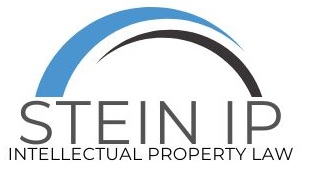- HOME
- > Blog Main Page
- > News
- > A Summary on Inventorship Guidance for AI-Assisted Inventions issued by the USPTO
A Summary on Inventorship Guidance for AI-Assisted Inventions issued by the USPTO
by Aman Mehta
In a landmark move that underscores the evolving intersection of artificial intelligence (AI) and intellectual property law, the United States Patent and Trademark Office (USPTO) has issued new guidelines on inventorship for AI-assisted inventions. This development follows an executive order by the Biden-Harris administration on October 30, 2023, which called for the safe, secure, and trustworthy development and use of AI, and specifically tasked the USPTO with clarifying the role of AI in the inventorship process.
The guidance, released on February 13, 2024, aims to provide clarity for stakeholders and USPTO personnel on how inventorship issues will be analyzed as AI, including generative AI, plays an increasingly significant role in the innovation process. A central theme of the guidance is the necessity of significant human contribution in patents filed with the assistance of AI. This stipulation aligns with the definition of "inventor" in 35 U.S.C. 100(f), which has been interpreted to mean human individuals or groups of individuals who have invented or discovered the subject matter of an invention. This interpretation was reinforced by the Thaler v. Vidal case (Thaler v. Vidal, 43 F.4th 1207 (Fed. Cir. 2022), which concluded that AI systems cannot be named as inventors.
The guidance further elaborates on the complexity of human-AI collaboration in the invention process. It suggests that the human contribution should come from the complex prompting abilities of engineers and individuals, indicating that mere control of an AI system or simple presentation of a problem to an AI model does not constitute an invention. It is the specific and deliberate prompting by humans that elicits a particular solution from an AI system which qualifies as an invention.
To determine the significant human contributions, the guidance refers to the "Pannu factors" from Pannu v. Iolab Corp., 155 F.3d 1344, 1351 (Fed. Cir. 1998), which outline the criteria for being considered a joint inventor. These include (1) contribute in some significant manner to the conception or reduction to practice of the invention, (2) make a contribution to the claimed invention that is not insignificant in quality, when that contribution is measured against the dimension of the full invention, and (3) do more than merely explain to the real inventors well known concepts and/or the current state of the art. By this, the guidance seeks to ensure that the human contribution meets the guidelines set out in this case.
Keeping in mind the Pannu factors and the rules set out under Thaler, the USPTO has set-out guiding principles which focus on significant human contribution. These principles are summarized below:
1. A natural person's use of an AI system in creating an AI-assisted invention does not negate their contributions as an inventor.
2. Merely recognizing a problem or having a general goal does not constitute conception.
3. Reducing an invention to practice alone does not constitute a significant contribution; a natural person must make a substantial contribution to the AI-generated output to be considered an inventor.
4. Each claim in a patent application must have been invented by at least one named inventor (human) who has provided significant contribution to the output.
5. Maintaining "intellectual domination" over an AI system does not make a person an inventor of any inventions created through the AI system.
These guidelines are not only a response to the rapid development of AI but also an effort to encourage innovation while ensuring that human ingenuity remains at the forefront of technological advancements. The USPTO's approach is broad, aiming to cover the current use of AI comprehensively. Importantly, the guidelines are effective immediately, and the USPTO has invited public comments and suggestions, offering stakeholders an opportunity to shape the future of AI and patent law.
This move by the USPTO is a significant step towards addressing the complex issues at the intersection of AI and patent law, ensuring that the legal framework keeps pace with technological advancements while fostering an environment that encourages innovation.
Resources:
https://www.whitehouse.gov/briefing-room/presidential-actions/2023/10/30/executive-order-on-the-safe-secure-and-trustworthy-development-and-use-of-artificial-intelligence/?utm_campaign=subscriptioncenter&utm_content=&utm_medium=email&utm_name=&utm_source=govdelivery&utm_term=
https://www.federalregister.gov/documents/2024/02/13/2024-02623/inventorship-guidance-for-ai-assisted-inventions
https://www.govinfo.gov/link/uscode/35/100
https://patentlyo.com/patent/2024/02/joint-inventorship-human.html
https://casetext.com/case/pannu-v-iolab-corp
https://via.library.depaul.edu/cgi/viewcontent.cgi?article=1652&context=jatip

TAGS:
